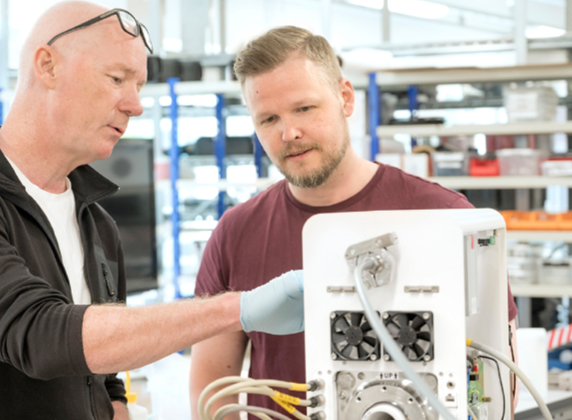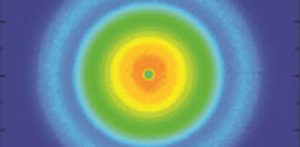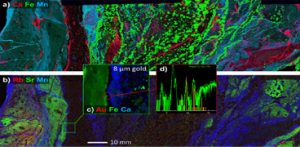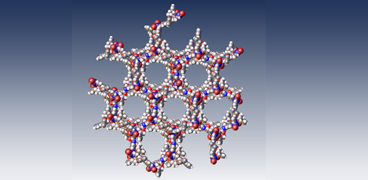EXCILLUM : Discover Excillum
A very bright spot is a window into new worlds.
From the world’s smallest, brightest X-ray spot, new frontiers are beginning to emerge. New nanoscale insights. New manufacturing capabilities. And powerful new research workflows.
Whether it’s impossibly small electronics, unseen biological processes or infinitely complex materials, advanced X-ray source technologies are opening windows into a range of emerging applications. At Excillum, we’re pioneering a new generation of X-ray source technologies that make it possible. By making X-ray sources better, brighter and more precise than ever before, we’re helping to reveal the smallest, most complex details with unprecedented speed and clarity.
The continuous drive for enhanced performance has inspired us since our invention of the Excillum MetalJet, the world’s brightest microfocus X-ray source, more than twenty years ago. Our customers have remained at the absolute forefront of X-ray based innovation ever since, whether it’s probing complex nanostructures, accelerating scientific output or enhancing manufacturing quality. Together, we continue to push the limits of technology to open new opportunities in high-tech manufacturing, medicine and science.
A new era of X-ray
source technologies
The liquid metal-jet anode, pioneered by Excillum, is the original foundation for our growing portfolio of high-performance X-ray sources and electron-beam technologies. Discover how this breakthrough unlocks powerful new opportunities beyond the limits of conventional solid anode technologies.
Pushing the limits with Excillum
Wherever speed, cost and nanoscale quality are critical, Excillum brings the X-ray source technologies and expertise to make it possible. Excillum CEO David Lindblom explains what this means for partners and industries in their efforts to push the limits of X-ray based innovation.

Bringing big ideas into focus
From phase-contrast imaging and spectroscopy to protein crystallography and non-destructive testing, our sources continue to push the boundaries of X-ray performance in more than one hundred of the world’s top research and development laboratories.

Small-Angle X-ray Scattering (SAXS)
SAXS is used to study the structure of materials in the 1 nm to ~200 nm range.

X-ray spectroscopy and fluorescence
Spectroscopic X-ray methods are based on detecting X-ray energy spectra.

Phase-contrast imaging
For materials that have low absorption the phase can give more than 1000 times stronger contrast than absorption.

Small molecule crystallography
Uses X-ray diffraction in the determination and study of the three dimensional structure of a material.
Enabling tomorrow’s breakthroughs
Enhanced resolution, contrast and throughput are essential to X-ray analysis and imaging in a wide range of industries and scientific disciplines. In science, our sources are used to advance research in polycrystalline materials and bulk chemical analysis. In industrial manufacturing, they bring greater clarity and higher throughput speeds to non-destructive testing. And wherever research demands capabilities beyond one micron or 500 nanometer resolutions, no technology compares to the world’s brightest X-ray sources.
